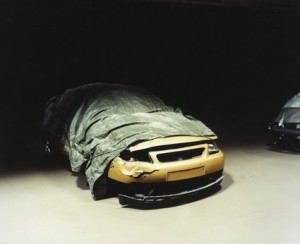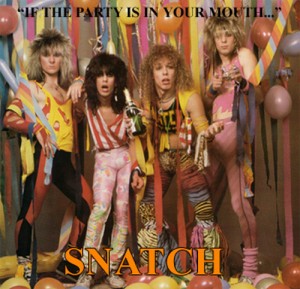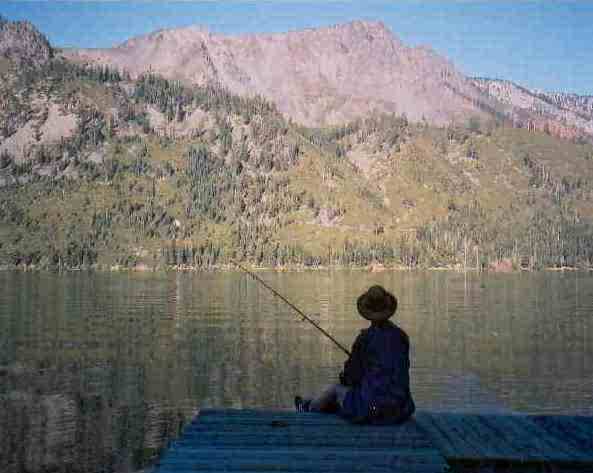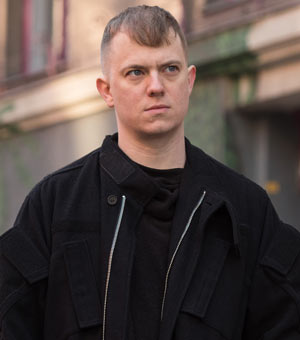Gallery Mittwoch
by Travis Jeppesen on September 3, 2008
The Berlin art season officially gets underway tonight with Gallery Mittwoch at the former Friedrichshohe brewery in Friedrichshain: 8 independent galleries presenting dozens of artists in 1 amazing building.
Tomorrow: birthday, hangover.
Ricarda Roggan at Kunst-Werke, Berlin
by Travis Jeppesen on September 2, 2008
Ricarda Roggan: Still Life
KW Institute for Contemporary Art, Berlin
Through September 7th
There’s still time to see Ricarda Roggan’s show before it closes, and it’s worth the effort. Although her work might be overshadowed by the fact that Richard Serra’s films are being exhibited concurrently in the building, I have to say that, while I admire Serra’s sculpture, his films are boring. Nor is the Albrecht Schäfer exhibition all that memorable. No, there is only one reason to visit Kunst-Werke right now, and that’s to admire Ricarda Roggan’s fine photographs.
Roggan works in series. In Bäume 1-7 (2008), you are confronted with green foliage, the suffocating blaze of nature. The photos here are necessarily cropped in that you just can’t fit it all in – the forest, the trees, they seem to go on forever – where the image begins and ends is thus an arbitrary matter. Roggan makes it all the more suffocating by the small scale of the prints – indeed, these are the smallest photos in the exhibition. You want to penetrate all this foliage – go inside it, get beyond it – yet that desire is also tinged by fear – fear of everything the forest represents: the anarchy of nature’s impulses.
In the next space, this anarchy finds its quiet contrast in the stringency of empty spaces. White indeterminacy. Brick walls painted white. These prints are a lot larger, both in terms of size and scale, which makes sense because the spaces they depict are completely open, rather than crowded. This openness doesn’t beg to be filled; it plaintively asks to be absorbed.
The exhibition then builds (notice how deft it’s all been laid out) to the monumental depictions of crashed cars. Light bisects each of the images horizontally in classical painterly style. It is at this point that you’re reminded that, despite the proliferation of digital images in art these days, the most enduring images are those rooted in painterly values. When the photographer lacks a subtle understanding of form, color, light, and composition, then no matter how captivating or provocative their subject matter is, the work winds up looking like garbage. You don’t have to look much further past the snapshots of a Ryan McGinley or a Dash Snow to recognize the extent to which this sort of visual retardation has become popularized in recent years, but this is a passing trend, my friend, and the work of real artists such as Roggan shows us why.
Some might say that there’s something a bit cold, detached, and sad about these images – something a bit, well, stereotypically German. The arrangement of photos, after all, reaches a sort of anti-climax with three photographs of a single long meeting table with chairs. It infers an almost mocking pre-occupation with bureaucratic formality, one that would certainly look out of place in an American (read: corporate) context, but seems particularly adroit in its apparitional foregrounding.
Roggan’s most painterly effort is the final series, which consists of attic interiors. Arboreal panels, beams, rafters stuffed with rotting wood, stairways above doorways each providing alternate exit routes, although we are never given a chance to see what lies beyond, what might give these haunted empty locales a context. How fitting is all this for the austere environment of Kunst-Werke’s bottom level, with its brick and white and concrete floor, glimpses of sun leaking in through the skylights.
Snatch
by Travis Jeppesen on September 1, 2008
Of Kids and Parents
by Travis Jeppesen on August 31, 2008
Of Kids and Parents by Emil Hakl, translated from the Czech by Marek Tomin (Prague: Twisted Spoon Press, 2008)
Twisted Spoon’s latest publication, a translation of Emil Hakl’s Of Kids and Parents, is a simple novel, if any novel can really be called simple, but simple in a deceptive way, in that it connects its characters’ seemingly mundane lives to larger events in history – namely, the history of Czechoslovakia and Eastern Europe in the last century. The book largely consists of a dialogue between father and son. As the jacket blurb rightly notes, the narrative is centered around walking, an act that assumes almost a spiritual importance in European literature (think Ulysses, etc.); if this were an American novel, then they’d probably be driving everywhere; but as this is a Czech novel, specifically a Czech urban novel set in Prague, they walk, and the walk is dotted with stops in pubs, until both protagonists are good and drunk, at which point they can go home for the night and sleep it off. In the beginning, there is nothing spectacular about either of the characters, and this is what makes them interesting; our focus thus remains on the stories they tell one another, until the stories become who they are. In the course of the conversation, the son reveals to his father that he is a father himself – a fact unknown to him until recently – and his efforts to connect with his son are fraught with his painful recognition of himself at that age. And the father, whose life is nearly over, his concerns are largely rooted in the past – one could say he is haunted by the past – and in this sense, he represents history whereas the son, who is middle-aged, is lodged somewhere between the conception of history represented by his father and an awareness that his own glory days are well behind him – becoming his father may be all he has to look forward to.
Of Kids and Parents is a very enjoyable melancholy read and Tomin’s translation keeps alight Hakl’s fiery naturalism in both dialogue and description.
Vaginal Davis presents….. DEROHAN CHABOT
by Travis Jeppesen on August 27, 2008
reading in Berlin
by Travis Jeppesen on August 26, 2008

I’ll be reading at the next Borderlines event on Saturday, August 30 at 19:30.
It will take place at STYX Project Space, on the second floor of the Alte Brauerei Friedrichshohe, Landsberger Allee 54, Berlin.
Signed copies of my first three books (Victims, Poems I Wrote While Watching TV, and Wolf at the Door) will be available for purchase.
Schloss Tegal – The Myth of Meat (Tegal Records, 2008)
by Travis Jeppesen on August 25, 2008
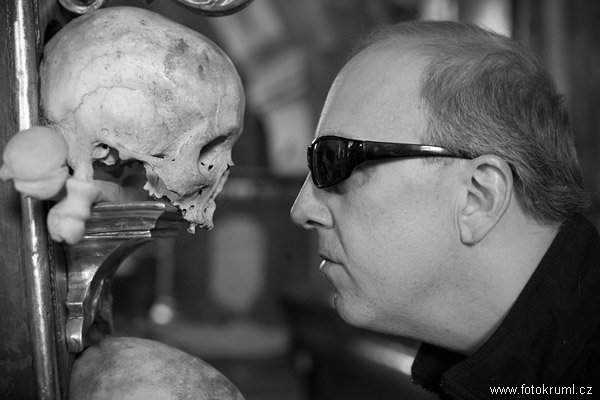
Schloss Tegal continues to explore the absolute outer regions of “human” experience, with every recording and live action they issue. I put human in quotation marks because, on The Myth of Meat, their latest release, they manage to forge the spiritual netherworlds of previous efforts in a visceral assertion of pure corporeality; we are all animals, we are constantly reminded, from the blunt photographs of a Czech meat factory adorning the cover, to the slashing sounds of manic butchery encapsulated within.
In the past, Schloss Tegal has dabbled with ufological sampling as well as electronic voice transmissions from the spirit world. Now, the collaboration of sound artists Richard Schneider and MW Burch has entered into a new era, one of “psychogenic music with extreme realism,” as the pair describes it.
“I don’t want to die.” This plaintive statement is repeated on a loop on the album’s third track, “Urban Funk Campaign (Feraliminal Lycanthropizer),” and it is backed by yet another gravel-sharp voice intoning the indecipherable, as doors slam and the hatchet stabs the metal dissecting table. Bloodlust satiates our membranes, and yet only the most powerful are able to satisfy these cravings. No less an abomination than the Hostel films express this subhuman norm, but in their inherent patheticity, we cannot seriously indulge the truths they purport to represent. The Myth of Meat, on the other hand, gives us a realness we are truly ill-prepared for. While the layering is dense, in true Tegal style, we can readily discern the sounds of a slaughterhouse, the mundane slayings that give rise to the evening meal – the “Cannibal Communion” that comprises our nightly ingestion of death before farting our way into nocturnal slumber.
There’s nothing to panic about, kids. Not unless you’re an imaginative type, drawn to infer that it is you yourself about to be hung on the meat rack, the valuable parts of yourself torn away to reveal your ultimate soullessness. It won’t be dramatic. You won’t scream. The part of you that enables that function will no longer be there.
Does this gruesome hoax, this filth of days, serve some so-called higher purpose? Can you imagine a radioactive farce being played out on the dissecting table as you try to call to mind the proper names of those entities, beings that have placed you there? Or will the sounds of the saws and the cleavers and the gadgets remind you the impenetrability of such happenings?
Wild occurrence: that’s the fantasy of an enlightened few. The anomaly here is “The Long Pig,” a track that seems to return Schloss Tegal to its sci-fi roots in its beeps and subliminal voice warblings.
The mix, as always, rends its way through your skull via invasive volume. Maximalization truly necessary in a time when most are afraid to assert anything. When crippled by language (against language), we may rely on raw sound as the true transmitter of certain ideas, truths. Sadly, the image may only rarely be trusted. Gertrude Stein said it most coherently, even presciently, in Lucy Church Amiably:
It is easier to listen than to look. To be as and can.
When the metaphorical is extricated to blend with and uphold the possible. That is where a new opening, a flesh wound, gives way to a certain light, a light of recognition that binds as it blinds.
IN MEMORIAM: Michael Baxandall (1933-2008)
by Travis Jeppesen on August 20, 2008
Michael Baxandall has died. As an art historian, he was responsible for engineering the idea of the “period eye,” in which one must take into consideration the social, cultural, and economic realities surrounding the creation of a work of art in order to “see” it in its original authorial and cultural context.
At the same time, Baxandall broke with a tradition of social art history by largely omitting politics from his analysis. This made his work the subject of criticism by Marxist social historians of art, whose interpretation is naturally rooted in a class bias.
In a work like Painting and Experience in Fifteenth-Century Italy, however, it becomes clear that, despite the complains of the Marxists, Baxandall was indeed concerned with the power structures inherent in Renaissance Italy. He just didn’t take sides, is all. Let the past be the past, he seemed to be saying; I’m just here to show you what I’ve found. Are we then to blame him for his rigid air of objectivity, his heavy reliance on source documents surrounding the commissioning and creation of particular works? If anything, Baxandall is generous in letting us form our own conclusions based on the gathered evidence.
Perhaps the most intriguing aspect of Baxandall’s method, as it came to fruition in such landmark works as The Limewood Sculptors of Renaissance Germany, was its ambiguity. His work continues to buck against academic standards of writing in refusing to reach a summarizable conclusion. In this respect, Baxandall is all pure method; he shows us the possibilities inherent in historical research as process, the joy in unearthing buried connections otherwise destined to remain external to our understanding of beloved paintings and sculptures.
Eventually, Baxandall came to admit that he was actually a historian of culture, rather than art proper. The distinction had to be made, as his focus was not on the purely formal aspects of art, but on the ways in which life has constantly intervened to mold and shape those mysterious images and objects that are the products of endless delight, honor, and speculation for the living, and often come to be seen as relics once the original creator and possessor are no more.
In this sense, Michael Baxandall was a writer for whom art and life truly were inseparable. For this reason alone, his legacy will continue to resonate, even while his work continues to perplex and bemuse.
We’re Back
by Travis Jeppesen on August 19, 2008
Here’s the book cover:

and it’s already available for pre-order in the U.K., U.S.A., Germany, France, Canada,
etc., etc.
The book will officially be released in November of this year; review copies and press materials may be acquired via heidipsjames -at- hotmail.co.uk
Gone Fishin’
by Travis Jeppesen on June 17, 2008
Actually, I’m working on a novel.
See you in August.

